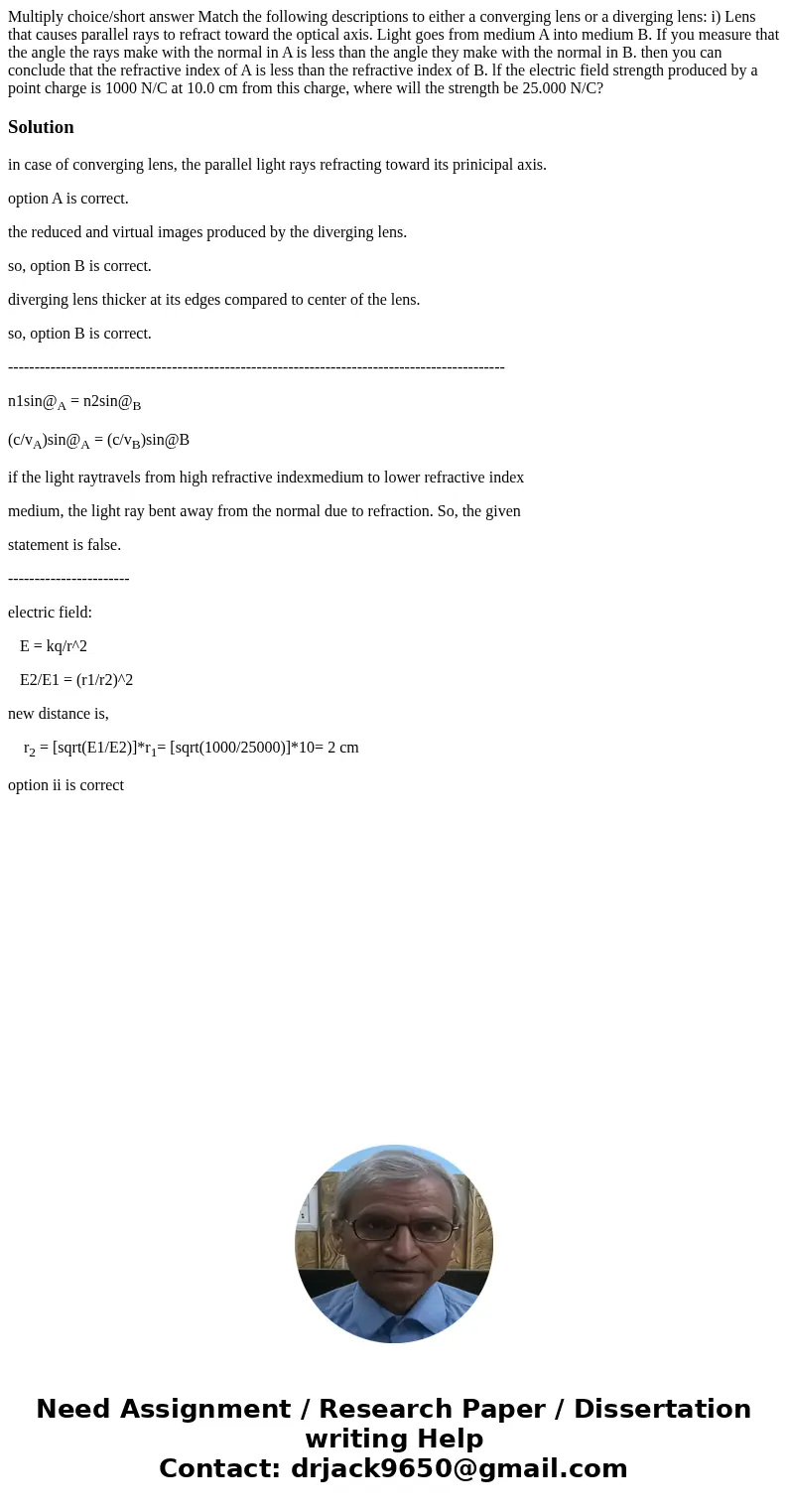Multiply choiceshort answer Match the following descriptions
Solution
in case of converging lens, the parallel light rays refracting toward its prinicipal axis.
option A is correct.
the reduced and virtual images produced by the diverging lens.
so, option B is correct.
diverging lens thicker at its edges compared to center of the lens.
so, option B is correct.
----------------------------------------------------------------------------------------------
n1sin@A = n2sin@B
(c/vA)sin@A = (c/vB)sin@B
if the light raytravels from high refractive indexmedium to lower refractive index
medium, the light ray bent away from the normal due to refraction. So, the given
statement is false.
-----------------------
electric field:
E = kq/r^2
E2/E1 = (r1/r2)^2
new distance is,
r2 = [sqrt(E1/E2)]*r1= [sqrt(1000/25000)]*10= 2 cm
option ii is correct

 Homework Sourse
Homework Sourse